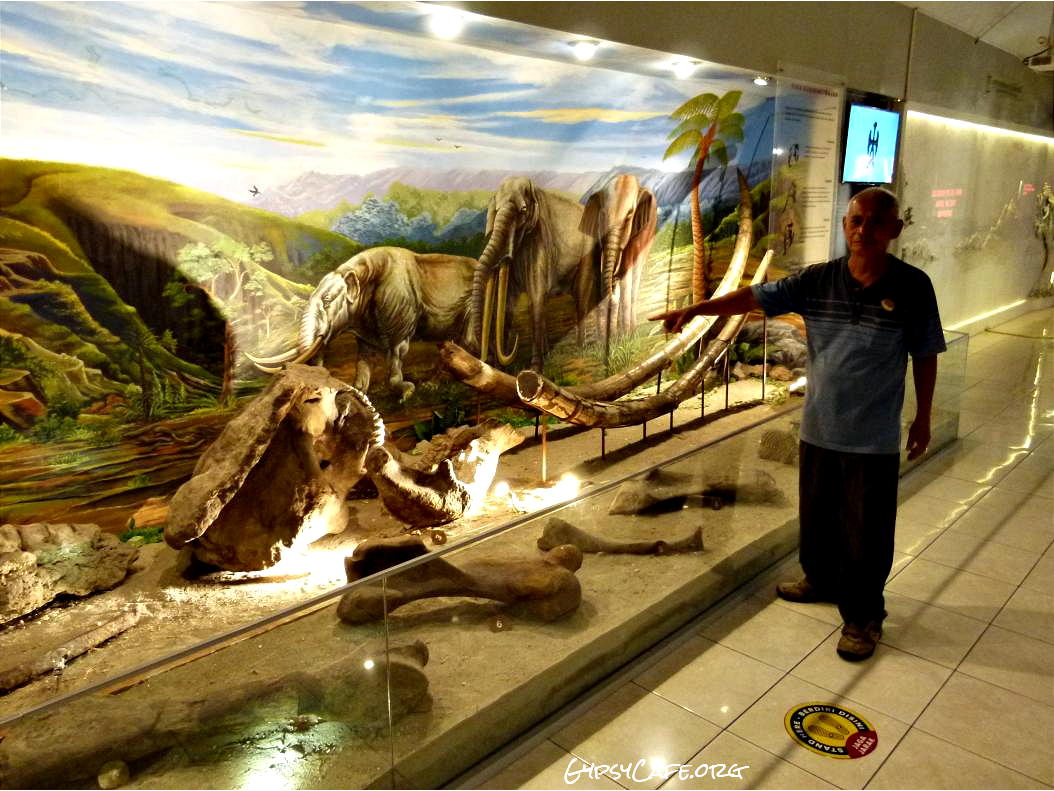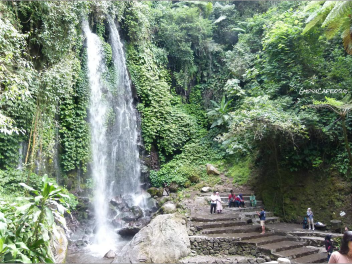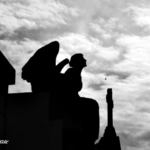
* South East Asia – Temple Tours Trip (Part 4) – October 2024 – Java, Indonesia *
It has been exactly a year since I traveled to South East Asia to see as many sites as I could during my time there. This post is about two of the first temples I visited in Central Java, shortly after my arrival (14th of October 2024). My first objective was to see smaller, less known temples in the Surakarta (‘Solo’) region before getting around to the larger and more famous sites in the Yogyakarta area (specifically Parambanan and Borobodur temple grounds).
I took a train from ‘Yogya‘ (where I landed) to Solo, which was more or less an hour’s ride. At the B&B in Solo I booked a private car and driver (a friend of the B&B) for a day-trip the to temple sites recommended by off-the-beaten track backpackers. The temples are some distances away in the mountains with no convenient public transport options to get there and I never rent cars when traveling abroad, so decided on a private excursion in this case as I really wanted to see these sites.
The region was very scenic and green (due to recent rains) and several photo stops were made at lookout points, some overlooking small farms or tea plantations. Our first destination was a renowned archeology museum at Sangiran, considered one of the most important sites in the world for the study of ancient human fossils. On the UNESCO site the following is stated:
The macrofossils that appear abundantly from the layers provide a detailed and clear record of many faunal elements, while the property reveals more than 100 individuals of Homo erectus, dating back to at least 1.5 million years ago. These fossils show human evolution process during the Pleistocene period, particularly from 1.5 to 0.4 million years ago. Inhabited for the past one and a half million years, Sangiran is one of the key sites for the understanding of human evolution. More discoveries of stone tools have been made since. These human, fauna, and stone tool materials were deposited within its unbroken stratigrafical layers.https://whc.unesco.org/en/list/593

Unfortunately the museum is not based at an excavation site (I did not realize that in advance), so there wasn’t much to see beyond the museum buildings. It is a world-class museum though, with a lot of detailed information, and importantly, I did get to see a variety of very rare fossils on display. The guide at the museum told me that he personally excavated some of the fossils (some named after him) and shared many interesting facts. I lingered a bit after the guide left me before heading back to the car.
It took a couple of u-turns with fortunate scenic mountain-drive detours because of road damage due to heavy rainfalls a couple of days earlier before we arrived at ‘Candi’ Sukuh (‘candi’ meaning Hindu or Buddhist temple in Indonesian), which was the first temple site that I would visit on my South East Asia trip.
(1) Candi Sukuh – Sukuh Temple
(Hindu Temple in Java, Indonesia)
Notes from the signboard at the entrance:
The site is on the western slopes of Mount Lawu in Central Java, situated at about 910 m above sea level (3,000 f). The monument was built around the 15th Century (est era: 1429 – 1446). Facing West, it consists of three levels which symbolize some of the levels for attaining perfection in life. Some reliefs explain the existence of three worlds (levels of life); the underworld, the middle world and the above world. The three worlds depict the levels humans must pass to go to Nirvana.
I found the last part on the board to be especially interesting as its so similar to the cosmovision of the Mayas. Moreover, the shape of the pyramid is not dissimilar to the Maya pyramids either. It was also interesting to see the turtle carvings, which is a very important symbol in Mesoamerica as well and is related to the creation of the world.

The World Turtle, also called the Cosmic Turtle or the World-Bearing Turtle, is a mytheme of a giant turtle (or tortoise) supporting or containing the world. It occurs in Hinduism, Chinese mythology, and the mythologies of some of the indigenous peoples of the Americas – Wikipedia
Although not specified on the board, many of the reliefs at Candi Sukuh have themes that symbolize conception and fertility with sexual education apparently being the primary purpose, which makes these two sites distinctive from most other temple sites in the region. This is also confirmed by online sources that state that Candi Sukuh was used for observances by the fertility schools (referred to as fertility cults) in the region.
This was a small but pleasant site to visit with great views from the top of the pyramid. Topping that It was a perfect day weather-wise in a very green and scenic area, so I savoured the moments before we departed.

The driver took a detour between the two candis, this time to stop for a “hike” (a walk up steep pathways) up to an impressive waterfall where we spent some time enjoying the scene with some local visitors and we got some refreshments as well.
***
(2) Candi Cetho – Cetho Temple
(Hindu Temple in Central Java, Indonesia)
Candi Cetho is about 30km’s from Solo and not too far from Candi Sukhu but all the twists and turns during the drive made it seem further. It is situated at an elevation of 1495m above sea level on the western slope of Mount Lawu. It is a much larger site that consists of multiple terraces that one has to ascend along to reach the top levels and the temple itself, afterwards when continuing further along the scenic pathways there is a shrine and beyond that (along a short hike in the woods) is another ‘hidden’ temple, Candi Kethek (see in the photo album).
These two candis are at a much higher elevation than Candi Sukhu and the view from above over the local village and valley below was breathtaking. There was a sense of mystery and mysticism here and the architectural affects of the gateways (portals) when when ascending up the terraces and especially when looking back towards the entrance and valley, were stunning. It wasn’t a very busy site which meant everything could be taken in and enjoyed at leisure.
A few notes from the signboard:
Cetho was built around XV. It is based on the relief interpretation carved on the entrance gate in seventh terrace. The founding of the inscription explains that Cetho temple functions as a sacred building to liberate sin. This statement is also supported by reliefs telling Sudamala story.
Similar to the other site, there is fertility symbolism displayed in some of the structures and reliefs at Candi Cetho, but fewer than at the aforementioned site. There were also structures here depicting turtles related to the creation of the universe (evidence that this was a universal symbol in the past spanning many cultures).

Some further details I found online are that “Cetho” means “clear” because the hamlet just below the temple site had such clear views of the valley and the regions beyond. The architectural format here is apparently not considered to be typical of Hindu temple architecture in Java, indicating indigenous cultural community influences. It is also noted (online) that the temple design is similar to the Maya temples in Mexico and the Incas in Peru (which was also obvious to me). Some structures are considered similar to Sumerian architecture. Although a lot of restoration was done to the site as it was abandoned for a long time, not all of it is considered accurate with regards to the original styles.
I thoroughly enjoyed this site as well and afterwards we enjoyed sunset views at a nearby lookout point along with a number of other people. We also made a stops at tea plantations before heading back to Solo, arriving at about 8pm where I took the train back to Yogyakartha.
I hope you enjoyed the click-through picture-tours above 🙂
All of the best,
Jean-Jacques
(PS: I still have some pictures of a couple of other notable sites on this trip which I may post around December. It’s just taking time to get around to it due to my essay-writing in between).








































4 Comments
Wow – this sounds like a vacation, after hearing about the miles you walked on Easter Island. For the future, I think you should include a picture of your shoes on every journey. 🙂 These are beautiful – and so well maintained. I see similarities with the Mayan pyramids. (I’ve been a little behind on reading, so still need to read the last post.)
Thank you for sharing the journey. love, in lak’ech, Debra
Thanks for commenting Debra! This part of the trip was indeed the most relaxing and comfortable in terms of sightseeing leisurely. It was quite the contrast to my Easter Island and Inca Trail trips, yes. The real TREKKING trips are always the most impactful for me, experientially. [Glad you liked the “flowers and boots” >pic< 😉 ]. Sometimes we have to treat ourselves though, considering how hard we work to make it out there.
The interesting thing about the temple sites in the region is that many if not most of them were partially or more or less completely reassembled from rubble due to earthquakes and other damages over the centuries. Most of the restorations were done post 2nd World War (it’s also the case in Cambodia), but there was one particular temple near Yogyakarta which was particularly impressive and interesting (partially reconstructed but still partially rubble) – will include some pictures in the next post.
Thank you for clicking through 🙂 . Take your time with the essays … I might be making some of them available in some form in an e-book format next year.
in lak’ech,
Jean-Jacques
Maybe you label them for posterity – ie. one-of-a-kind, boots that walked for miles on Easter Island. I’ve still have a little dirt from the place I slept in the Sun/Moon dance – priceless. 🙂
Pingback: Two Temple Gems of Central Java | Gypsy Café